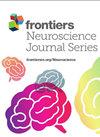艾洛拉辛在神经元变性模型中的神经保护作用
IF 3.2
3区 医学
Q2 NEUROSCIENCES
引用次数: 0
摘要
引言人们首次认识到,维甲酸(RA)对中枢神经系统(CNS)的发育调节作用非常重要,鉴于这种作用,人们提出了维甲酸在成年中枢神经系统中调节可塑性和促进再生的作用。这些类型的作用包括支持神经发生、诱导神经元突起和防止神经元死亡。这些功能主要由视黄酸受体(RAR)转录因子介导,因此 RARs 的激动剂已在多种神经变性模型中进行了测试。本研究采用了几种在 RAR 激动剂逆转神经退行性变的作用方面探索较少的体外模型。方法在一系列试验中,将神经元细胞置于与神经退行性变(尤其是肌萎缩性脊髓侧索硬化症(ALS))有关的压力类型下,测试 RAR 的新型强效激动剂 Ellorarxine 对神经的保护作用。在这些试验中,神经元细胞受到了谷氨酸诱导的兴奋毒性应激、环素导致的蛋白稳态破坏以及亚砷酸钠引发的导致应激颗粒形成的氧化应激的影响。结果 艾洛拉辛有效逆转了兴奋毒性和蛋白稳态破坏试验中的神经元死亡,并减轻了亚砷酸钠诱导的应激颗粒形成。本研究还首次发现了 RAR 对应激颗粒的调节作用,但应激颗粒的这种变化是否具有神经保护作用或潜在的再生作用尚不得而知。此外,还对小鼠腹腔注射 RAR 激动剂后的分布情况进行了评估,结果显示,与肝脏相比,RAR 激动剂更倾向于在中枢神经系统,尤其是脊髓中蓄积。脊髓中的基因表达研究表明,艾洛拉辛在低剂量(0.01 毫克/千克)时就能诱导转录变化。讨论这些发现强调了 RAR 激动剂(如艾洛拉辛)治疗 ALS 以及其他潜在神经退行性疾病的潜力。本文章由计算机程序翻译,如有差异,请以英文原文为准。
Neuroprotective effects of ellorarxine in neuronal models of degeneration
IntroductionRetinoic acid (RA) was first recognised to be important for the central nervous system (CNS) in its developmental regulatory role and, given this action, it has been proposed in the adult CNS to regulate plasticity and promote regeneration. These types of roles have included support of neurogenesis, induction of neurite outgrowth, and protection from neuronal death. These functions are predominantly mediated by the retinoic acid receptor (RAR) transcription factor, and hence agonists for the RARs have been tested in a variety of models of neurodegeneration. This present study employs several in vitro models less explored for the action of RAR agonists to reverse neurodegeneration.MethodsA series of assays are used in which neuronal cells are placed under the types of stress that have been linked to neurodegeneration, in particular amyotrophic lateral sclerosis (ALS), and the neuroprotective influence of a new potent agonist for RAR, ellorarxine, is tested out. In these assays, neuronal cells were subjected to excitotoxic stress induced by glutamate, proteostasis disruption caused by epoxomicin, and oxidative stress leading to stress granule formation triggered by sodium arsenite.ResultsEllorarxine effectively reversed neuronal death in excitotoxic and proteostasis disruption assays and mitigated stress granule formation induced by sodium arsenite. This study also highlights for the first time the novel observation of RAR modulation of stress granules, although it is unknown whether this change in stress granules will be neuroprotective or potentially regenerative. Furthermore, the distribution of RAR agonists following intraperitoneal injection was assessed in mice, revealing preferential accumulation in the central nervous system, particularly in the spinal cord, compared to the liver. Gene expression studies in the spinal cord demonstrated that ellorarxine induces transcriptional changes at a low dose (0.01 mg/kg).DiscussionThese findings underscore the therapeutic potential of RAR agonists, such as ellorarxine, for ALS and potentially other neurodegenerative diseases.
求助全文
通过发布文献求助,成功后即可免费获取论文全文。
去求助
来源期刊

Frontiers in Neuroscience
NEUROSCIENCES-
CiteScore
6.20
自引率
4.70%
发文量
2070
审稿时长
14 weeks
期刊介绍:
Neural Technology is devoted to the convergence between neurobiology and quantum-, nano- and micro-sciences. In our vision, this interdisciplinary approach should go beyond the technological development of sophisticated methods and should contribute in generating a genuine change in our discipline.
 求助内容:
求助内容: 应助结果提醒方式:
应助结果提醒方式:


